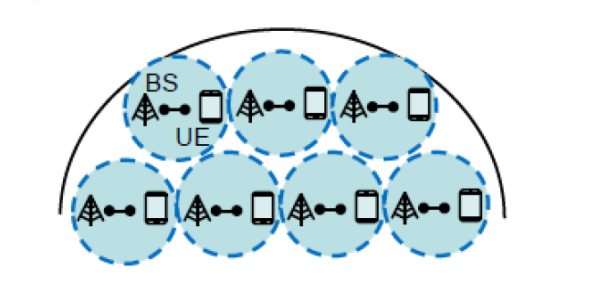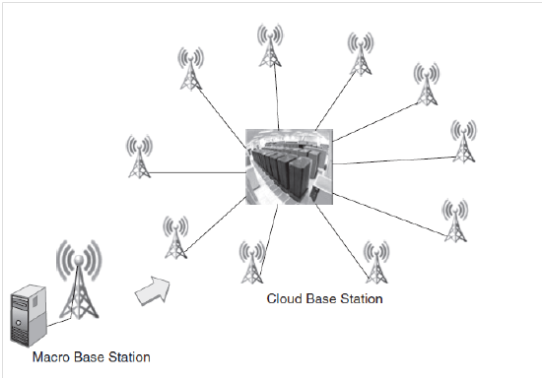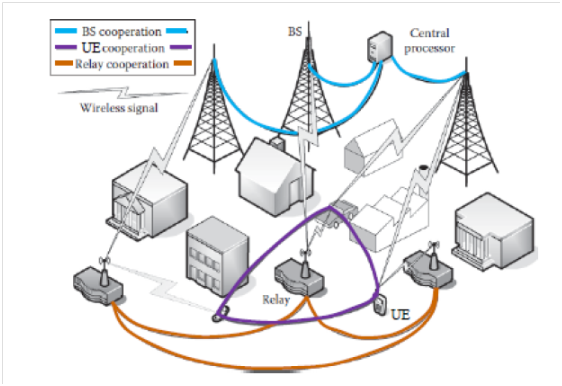
In the previous chapter, we introduced readers to spectral aggregation, a technique for acquiring increased spectrum for 5G services. In this chapter, readers will be introduced to spatial densification as a way of meeting the demand for capacity in a 5G network.
In order to meet these demands, the key technologies applied at the 5G physical layer are Network Densification, Heterogeneous Networks, Cloud Radio Access Network (RAN) and Coordinated Multipoint (COMP).
3.1 Network Densification

Register for Tekedia Mini-MBA edition 18 (Sep 15 – Dec 6, 2025) today for early bird discounts. Do annual for access to Blucera.com.
Tekedia AI in Business Masterclass opens registrations.
Join Tekedia Capital Syndicate and co-invest in great global startups.
Register for Tekedia AI Lab: From Technical Design to Deployment.
The goal is to offload some of the traffic from the base stations (macro cells) to the small cells which therefore improves the frequency reuse. This requires careful network planning to balance the load, address interference and backhaul challenges [7, 8].
Small cells require less power and cooling and can be deployed closer to the user and within existing networks; the deployment of small cells will lead to a reduction in CAPEX and OPEX incurred by operators [8].
The small cells could be deployed with self – organizing network capabilities which allows the cells to sense their environment, switch off when in idle mode (reduces energy consumption), coordinate with other base stations to deal with interference challenges within the environment [8].
3.2 Heterogeneous Network

This combination of technological solutions involving the use of network of different technologies or network of multiple layers of different sizes is referred to as a Heterogeneous Network (HetNet), as clearly illustrated in Fig. 3.2.
A HetNet consists of multiple tiers of layers of different networks of different cell sizes and/or multiple radio access technologies [7, 12].
3.3 Cloud RAN for Backhaul
The deployment of a HetNet to increase capacity has to be complemented with a backhaul for this to translate into an enhanced user experience. The Cloud RAN has been proposed for backhaul purposes in 5G. In literal terms, it translates into Cloud Base Stations.
Cloud RAN involves relocating the signal processing from tens to hundreds of base stations to a centralized server platform (see Fig. 3.3); thus encouraging virtualization. It is especially suitable for high traffic demand areas like stadia and venues.
The Cloud RAN also reduces energy consumption by eliminating the need for air conditioning facilities at various sites. It is also able to adapt to the traffic demand within its geographic coverage daily [8, 12].
Besides Cloud RAN, Wireless backhaul can also be used within a 5G system.

3.4 Cooperative Communication
Base stations can cooperate among themselves by exchanging information. Cloud RAN is a special application of Cooperation among base stations.
Cooperation can either be Joint Processing or Coordinated Scheduling. In a Joint Processing Cooperative Communication system, the processing of information among the nodes takes place in a central processor. The nodes could be base stations, User Equipment (UEs), relays or even a hybrid [8]. For example, the base stations in Fig. 3.4 below exchange information that is processed in the central processor.

Whereas, in Coordinated Scheduling, exchange of information occurs among nodes but there is no need for a central processor [8].
3.5 Summary
In order to meet the increased demand for bandwidth/data, small cells are being densed in space and laid in various configurations within macro coverage areas. Besides, other air interface technologies are also been deployed and combined in clever ways, leading to the development of HetNet to provide the much needed capacity for 5G services. Cooperation among stations is also been developed as a way to meet the increased data demand; this is thus paving the way for virtualization at the radio interface.
Interoperability is no doubt vital to allow the various air interface technologies work seamlessly and fully cooperate among themselves, when deployed within a 5G network.



